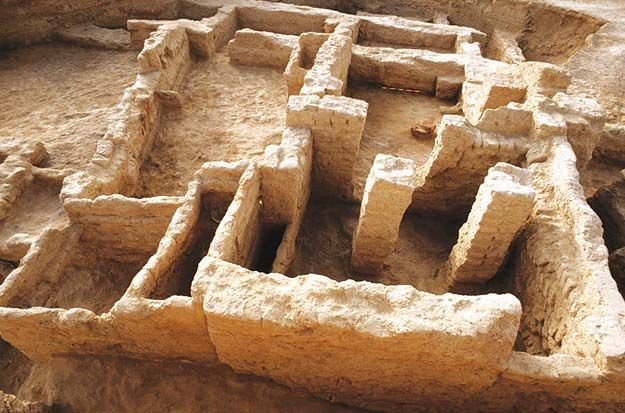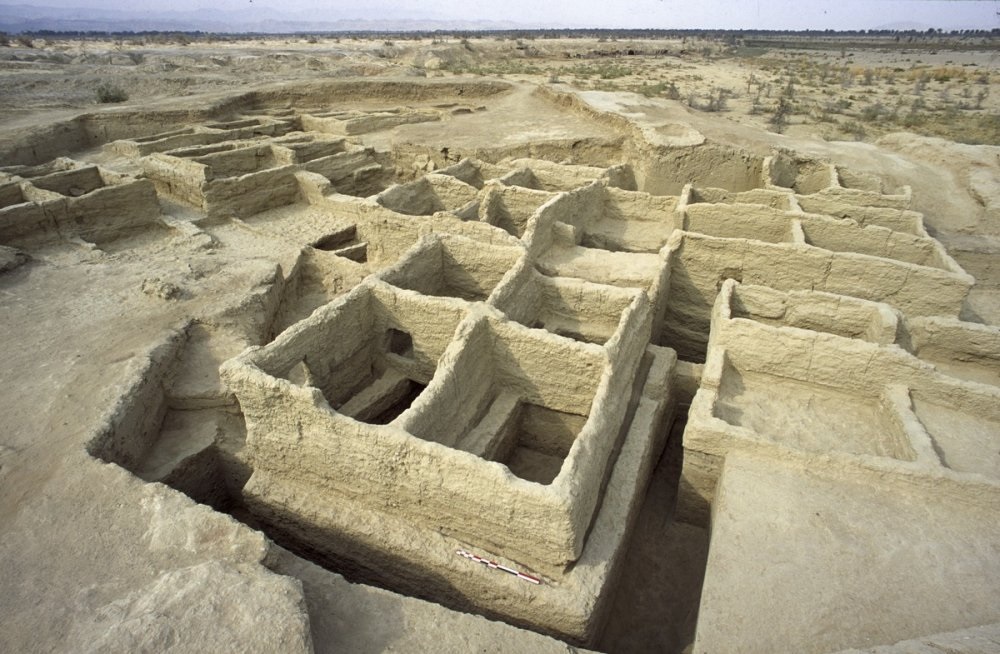Mehrgarh - Oldest Civilization of Pakistan

Mehrgarh civilization in Balochistan stands out as one of the most critical Neolithic (7000 B.C.E. to 3200 B.C.E.) destinations in South Asia. Archaeological diggings have uncovered probably the most valuable proof of cultivating and farming in that area. It is situated close to the Bolan Pass, towards the west of the Indus River valley and between the present-day Pakistan urban areas of Quetta, Kalat, and Sibbi. Mehrgarh was discovered in 1974 by the archeological group coordinated by French prehistorian Jean-François Jarrige. The site was exhumed persistently between 1974 and 1986. Following a ten-year rest, the group continued digging in 1996. The most punctual settlement at Mehrgarh, situated in the upper east corner of the 495-section of land site, had been a little cultivating town dated between 7000 B.C.E.– 5500 B.C.E.
The Mehrgarh culture has been divided into 8 sub periods and following are important features of these sub-periods:
1st Period
- Earliest period of Mehrgarh is characterized by polished stone tools, microliths and bone tools. In this phase the subsistence economy consisted of a combination of hunting, stock-breeding and plant cultivation.
- The domesticated animals comprise cattle, sheep, goat and water buffalo while the cultivated plants comprise several varieties of wheat and barley.
- The houses were made of mud and mud-bricks.
- Multiple rooms without doors are believed to have been used for storing grain.
- The dead were buried under the floors of the houses where people lived. Some of the skeletons which were buried have been found sprinkled with red ochre.
- Necklaces of steatite microbeads along with beads of turquoise, lapis lazuli and sea shell, stone axes and microliths have also been found in the graves.
- In two cases, bodies of young goats were also found.
- There was no pottery at this stage but baskets coated with bitumen were used.
2nd Period
- This period has left evidence of handmade, basket-impressed coarse ware. There was emergence of wheel-made pottery painted in reddish and black color with simple straight and curved lines, rows of dots and crisscrosses.
- Sickles made of stone bladelets, set obliquely in wood handles with bitumen as the adhesive material, may have been used for harvesting.
- Metal technology started , evident from the discovery of a copper ring and a bead .
- Terracotta human figurines and bangles also appear.
3rd Period
- Improved farming around 3000 BC is evident from a new variety of barley, viz. Hordeum sphaerococcum, which can be grown only in irrigated fields.
- The presence of cotton seeds suggests the possibility of the use of this fiber for textile manufacture.
- The Vessels were now decorated with paintings of birds and animals as well as geometric designs. Oats and another variety of wheat was added to the agriculture.
- Stone bead manufacturing and copper smelting started.
4rth Period
- Emergence of polychrome pottery with a tall goblet with wide mouth and a pedestal base as a new shape.
- Extensive use of timber in the construction of houses, of female terracotta figurines with pendulous breasts and of stamped seals of terracotta and bone.
- Emergence of commercial transactions.
5th Period
- A marked decline in polychrome decoration on pottery.
6th Period
- Dramatic increase in pottery styles and the first evidence of pottery kilns.
- Pipal leaf and humped bull designs appear on pottery which anticipate Harappan motifs.
- Proliferation of terracotta figurines, improved female figurines.
7th Period
- Richness and variety of terracotta figurines is very much similar to the Indus Valley Civilization.
- Medial partition of the hair suggests the popular practice among Hindu women.
- Terracotta bulls with prominent pumps and rams made in alabaster.
- Designs of swastika, cruciforms and running animals on terracotta figurines.
- Emergence of monumental architecture evident from a large brick platform.
8th Period
- Structured graves, semi-precious stone beads and a bronze shaft-hole ax.
- Cigar Snapped handmade Brick structures with fireplaces, stone blade industry using flint, composite stickle, grinding stones, bone tools, Pottery etc.
- In April 2006, it was announced in the scientific journal Nature that the oldest (and first early Neolithic) evidence in human history for the drilling of teeth in a living person was found in Mehrgarh. Mehrgarh is now seen as a precursor to the Indus Valley Civilization. “Discoveries at Mehrgarh changed the entire concept of the Indus civilization,”


Read also:
Kalat - Balochistan
Gwadar - The Door Of Wind
Princess of Hope - Balochistan
Urak Valley - Quetta Balochistan
Hingol National Park Balochistan
Hinglaj Mata Mandir - Balochistan
Hazarganji Chiltan National Park - Balochistan
Moola Chotok - A Hidden Paradise of Balochistan
